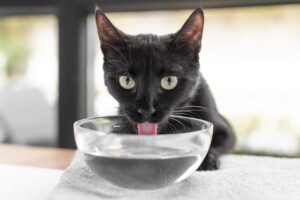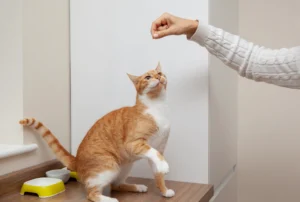Introduction
For cat parents, understanding what constitutes a healthy weight for your feline friend isn’t just about aesthetics—it’s fundamental to their overall health and longevity. A comprehensive cat weight chart can be an invaluable tool in monitoring your pet’s development and preventing serious health issues. In this guide, we’ll explore everything you need to know about cat weight charts by age, breed variations, and how to use these tools to ensure your cat maintains optimal health.
Whether you have a growing kitten, an adult cat, or a senior feline, monitoring weight using a reliable cat weight chart is crucial for preventing obesity and underweight conditions—both of which can lead to costly health complications. From kitten weight charts to senior cat weight charts, we’ll cover the full spectrum of feline weight management to help you keep your furry companion in peak condition.
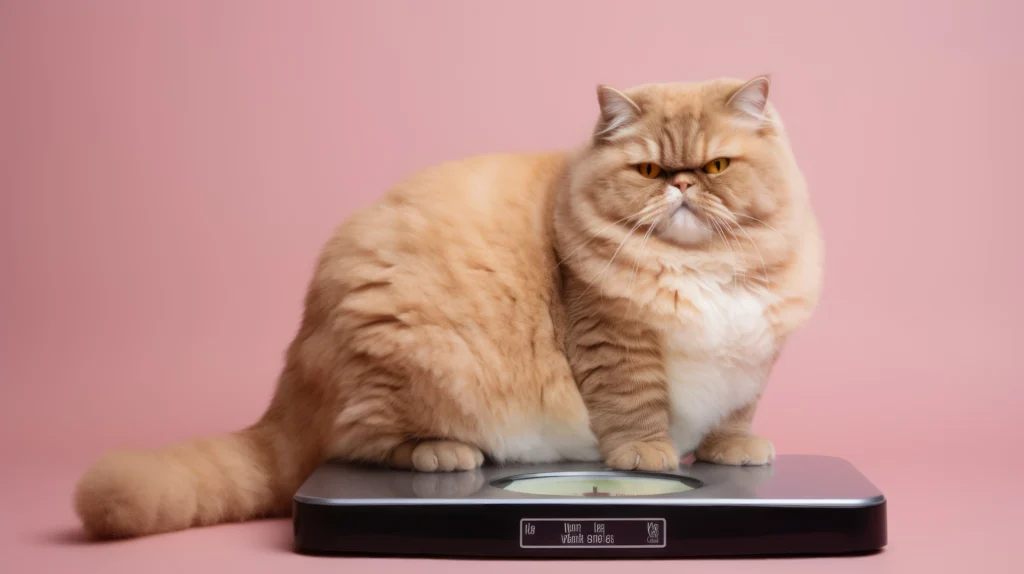
Why Cat Weight Matters: Understanding the Health Implications
Before diving into specific cat weight charts, it’s important to understand why maintaining a healthy weight is so crucial for your feline companion. A cat’s weight is more than just a number—it’s a vital indicator of their overall health status.
The Hidden Costs of Unhealthy Weight
When cats fall outside the range on a healthy cat weight chart, they face significantly increased risks for several expensive and potentially life-threatening conditions:
- Diabetes Mellitus: Overweight cats are up to 4 times more likely to develop diabetes, which requires lifelong management, regular veterinary visits, and insulin injections.
- Joint Problems: Excess weight puts strain on a cat’s joints, leading to arthritis and mobility issues that often require expensive pain medications and specialized care.
- Urinary Tract Diseases: Obesity is linked to higher rates of urinary tract disorders, which can lead to emergency veterinary visits costing hundreds or even thousands of dollars.
- Cardiovascular Issues: Overweight cats have a higher risk of heart disease and high blood pressure, potentially requiring lifelong medication and specialized cardiac care.
- Decreased Lifespan: Perhaps the most significant cost of all—cats outside the healthy range on a cat weight chart by age typically live shorter lives, with obese cats living an average of 2.5 years less than their healthy-weight counterparts.
Understanding these risks emphasizes why regular weighing and consulting a cat weight chart is so important. The modest effort required to monitor and maintain your cat’s healthy weight can save you significant heartache and financial expense in the long run.
Understanding Cat Weight Charts by Age
A comprehensive cat weight chart takes into account the natural growth and development stages that cats experience throughout their lives. Let’s explore how weight expectations change as cats age.
Kitten Weight Chart: The Crucial First Year
The first year of a cat’s life sees the most dramatic changes in weight and development. Using a kitten weight chart during this period is essential for ensuring proper growth.
Kitten Growth Chart By Week: The First 8 Weeks
During the neonatal and early development phases, kittens grow at an astonishing rate:
| Age | Expected Weight Range |
|---|---|
| Birth | 90-110 grams (3-4 oz) |
| 1 week | 150-250 grams (5-8 oz) |
| 2 weeks | 250-350 grams (8-12 oz) |
| 3 weeks | 350-450 grams (12-16 oz) |
| 4 weeks | 450-550 grams (16-19 oz) |
| 5 weeks | 550-650 grams (19-23 oz) |
| 6 weeks | 650-750 grams (23-26 oz) |
| 7 weeks | 750-850 grams (26-30 oz) |
| 8 weeks | 850-950 grams (30-33 oz) |
This early kitten weight chart provides crucial benchmarks. If you’re fostering or raising kittens, deviations from this chart could indicate nutrition problems or health issues requiring veterinary attention.
2-12 Months: Continued Growth
As kittens continue to develop, they should follow this general cat growth chart:
| Age | Expected Weight Range |
|---|---|
| 3 months | 2-4 pounds (0.9-1.8 kg) |
| 4 months | 4-5 pounds (1.8-2.3 kg) |
| 5 months | 5-6 pounds (2.3-2.7 kg) |
| 6 months | 5.5-7 pounds (2.5-3.2 kg) |
| 9 months | 7-10 pounds (3.2-4.5 kg) |
| 12 months | 8-12 pounds (3.6-5.4 kg) |
During this period, cats are approaching their adult weight. However, it’s important to note that the cat weight chart by age will vary based on breed and gender, with male cats typically weighing more than females.
Adult Cat Weight Chart: Ages 1-7
Once a cat reaches physical maturity at around 12 months (though some larger breeds like the Maine Coon continue growing until 18-24 months), their weight should stabilize within a healthy range. An average cat weight chart for adult cats provides these guidelines:
| Cat Type | Healthy Weight Range |
|---|---|
| Small frame female | 7-9 pounds (3.2-4.1 kg) |
| Medium frame female | 9-11 pounds (4.1-5 kg) |
| Large frame female | 11-13 pounds (5-5.9 kg) |
| Small frame male | 8-10 pounds (3.6-4.5 kg) |
| Medium frame male | 10-12 pounds (4.5-5.4 kg) |
| Large frame male | 12-14 pounds (5.4-6.4 kg) |
This normal cat weight chart provides a general framework, but remember that healthy weight varies significantly by breed.
Senior Cat Weight Chart: Ages 7+
As cats enter their senior years, metabolism changes and activity levels often decrease. A senior cat weight chart helps monitor these natural changes while preventing unhealthy weight gain:
| Cat Type | Healthy Senior Weight Range |
|---|---|
| Small frame female | 6-8 pounds (2.7-3.6 kg) |
| Medium frame female | 8-10 pounds (3.6-4.5 kg) |
| Large frame female | 10-12 pounds (4.5-5.4 kg) |
| Small frame male | 7-9 pounds (3.2-4.1 kg) |
| Medium frame male | 9-11 pounds (4.1-5 kg) |
| Large frame male | 11-13 pounds (5-5.9 kg) |
Slight weight loss in senior cats is normal, but dramatic changes should be addressed with your veterinarian. Using a cat weight chart for seniors can help identify concerning trends early.
Cat Weight Chart by Breed: Understanding Variations
When using a cat weight chart, it’s essential to consider breed-specific variations. Different breeds have dramatically different healthy weight ranges, making a generic cat weight chart insufficient for specialized breeds.
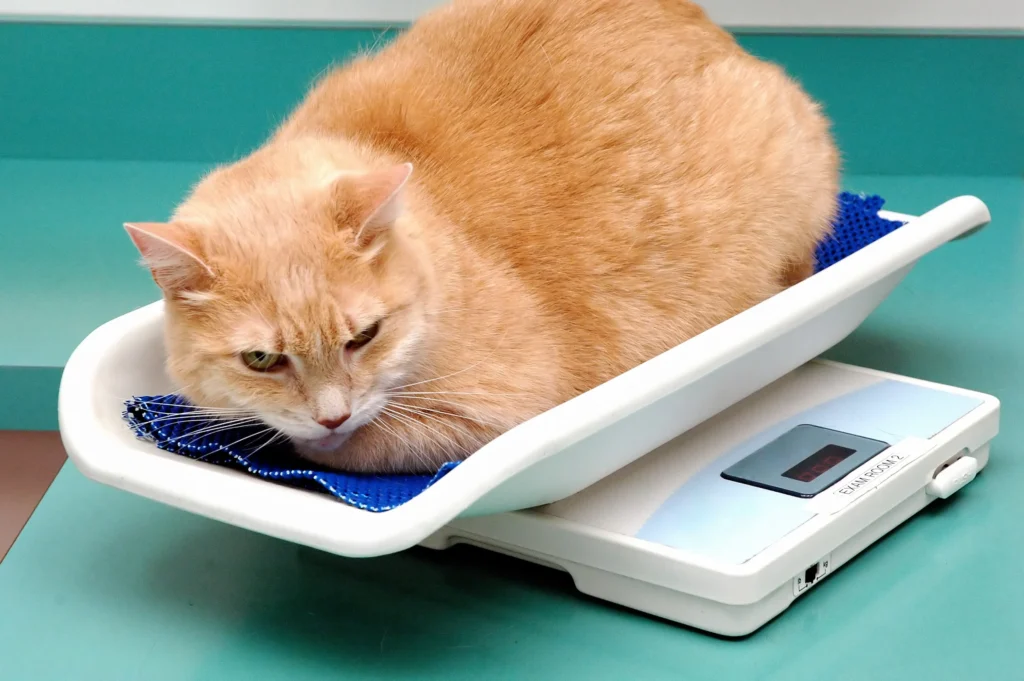
Small Breed Cats
These cats typically have smaller frames and lower healthy weight ranges:
| Breed | Healthy Weight Range |
|---|---|
| Singapura | 4-8 pounds (1.8-3.6 kg) |
| Cornish Rex | 6-10 pounds (2.7-4.5 kg) |
| Devon Rex | 5-9 pounds (2.3-4.1 kg) |
| Siamese | 8-12 pounds (3.6-5.4 kg) |
| Abyssinian | 8-12 pounds (3.6-5.4 kg) |
Medium Breed Cats
Medium-sized domestic cats represent the average on a typical cat weight chart:
| Breed | Healthy Weight Range |
|---|---|
| American Shorthair | 10-15 pounds (4.5-6.8 kg) |
| Burmese | 8-12 pounds (3.6-5.4 kg) |
| Bengal | 8-15 pounds (3.6-6.8 kg) |
| Domestic Shorthair | 9-15 pounds (4.1-6.8 kg) |
| British Shorthair | 12-17 pounds (5.4-7.7 kg) |
Large Breed Cats
Large breed cats naturally fall on the higher end of any cat weight chart by breed:
| Breed | Healthy Weight Range |
|---|---|
| Maine Coon | 10-25 pounds (4.5-11.3 kg) |
| Ragdoll | 10-20 pounds (4.5-9.1 kg) |
| Norwegian Forest Cat | 12-18 pounds (5.4-8.2 kg) |
| Siberian | 12-20 pounds (5.4-9.1 kg) |
| Savannah | 12-25 pounds (5.4-11.3 kg) |
The Maine Coon cat weight chart deserves special attention as they are the largest domestic cat breed. Male Maine Coons can healthily reach 25 pounds, with females typically ranging from 10-15 pounds. Using a standard domestic cat weight chart for a Maine Coon could lead to incorrect assumptions about their health status.
How to Use a Cat Weight Calculator and Body Condition Chart
While knowing the numbers on a cat weight chart is helpful, visual and tactile assessment is equally important. Veterinarians often use a Body Condition Score (BCS) system alongside an ideal cat weight chart to evaluate feline health.
The 9-Point Cat Body Condition Chart
This cat body condition chart helps assess if your cat is at a healthy weight regardless of what a scale says:
- Emaciated – Ribs, spine, and hip bones easily visible; no palpable fat; obvious waist and abdominal tuck; very pronounced bony structures
- Very Underweight – Ribs, spine, and hip bones easily visible; minimal fat; pronounced waist and abdominal tuck
- Underweight – Ribs and spine easily palpable with minimal fat covering; noticeable waist and abdominal tuck
- Lean – Ribs and spine easily palpable with minimal fat layer; visible waist behind ribs; slight abdominal tuck
- Ideal – Ribs and spine palpable but not visible; noticeable waist behind ribs; abdominal tuck present
- Slightly Overweight – Ribs and spine palpable with slight fat covering; waist visible from above but not prominent; abdominal tuck present but not pronounced
- Overweight – Difficult to feel ribs and spine under moderate fat layer; waist barely visible; abdominal tuck minimal
- Obese – Ribs and spine cannot be felt under thick fat layer; no visible waist; abdomen rounded with no tuck; fat deposits present on lower back and face
- Severely Obese – Massive fat deposits on chest, spine, face, limbs, and abdomen; distended abdomen with no waist
The cat obesity chart helps identify when intervention is needed. Cats scoring 6-9 on this scale need weight management strategies, while cats scoring 1-3 may require nutritional support to gain weight.
Using a Cat Weight Calculator
For a more precise assessment, you can use a cat weight calculator that takes into account:
- Age
- Breed
- Frame size
- Current weight
- Activity level
Many online cat weight calculators can provide a target weight range and help you develop a feeding plan based on your cat’s specific needs. These tools often incorporate elements from a cat feeding chart by weight to suggest appropriate portion sizes.
Implementing a Healthy Weight Management Plan
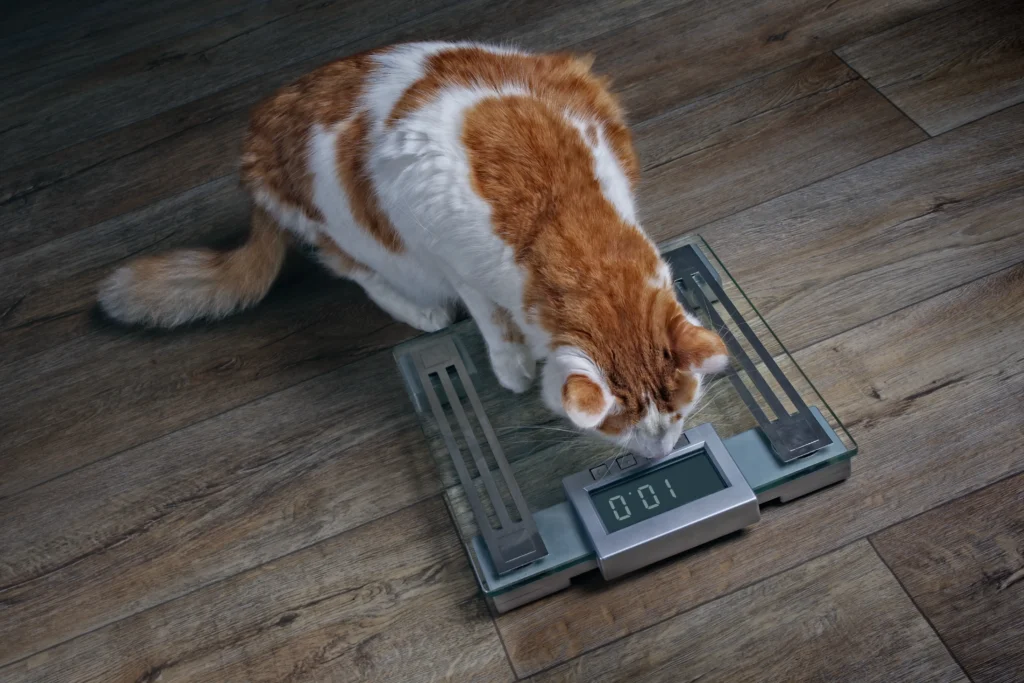
If your assessment using a cat weight chart indicates that your feline friend is outside the healthy range, it’s time to take action. Here’s how to safely address weight issues:
For Underweight Cats
If your cat falls below the recommendations on the healthy cat weight chart:
- Veterinary Checkup: Rule out underlying health issues like hyperthyroidism, parasites, or dental problems
- Calorie-Dense Nutrition: Choose high-quality kitten food or specialized weight-gain formulas
- Frequent Small Meals: Offer food 4-6 times daily
- Monitor Progress: Weigh weekly and track on a cat weight chart by age
- Supplements: Ask your vet about appropriate caloric supplements
For Overweight Cats
If your cat exceeds the ideal range on the cat weight chart:
- Veterinary Consultation: Develop a safe weight loss plan targeting no more than 1-2% body weight loss per week
- Portion Control: Use a precise measuring cup for all food
- Weight Management Formula: Consider specialized weight control cat foods
- Increased Activity: Implement daily play sessions with interactive toys
- Regular Monitoring: Track progress weekly using both scale weight and the cat body condition chart
Remember that crash diets are dangerous for cats and can lead to hepatic lipidosis (fatty liver disease). Weight loss should be gradual and monitored against an appropriate normal cat weight chart for your cat’s age and breed.
Special Weight Considerations for Different Life Stages
The cat weight chart reference points shift throughout your cat’s life, and special considerations apply at different stages.
Kittens and Weight Monitoring
During the rapid growth period covered by a kitten growth chart by week, pay special attention to:
- Consistent Gain: Healthy kittens should gain weight steadily
- Weaning Transition: Monitor weight closely when transitioning from milk to solid food
- Growth Spurts: Expect increased appetite during growth spurts
- Early Spay/Neuter: Fixed kittens may need slightly fewer calories, so adjust portions accordingly
Regular weighing and comparison to a kitten weight chart can help catch developmental issues early.
Adult Maintenance
During the prime adult years, focus on:
- Activity Matching: Adjust food portions to match changing activity levels
- Life Changes: Moving, adding new pets, or other stressors can affect eating habits
- Seasonal Variations: Some cats naturally gain slightly more weight in winter
The ideal cat weight chart for adults provides a range rather than an exact number, allowing for natural variations.
Senior Care
For older cats, the senior cat weight chart should be used alongside these considerations:
- Decreased Metabolism: Caloric needs typically decrease by 20-30%
- Protein Requirements: Seniors often need more protein despite needing fewer calories overall
- Dental Health: Tooth pain can lead to reduced eating and weight loss
- Chronic Conditions: Diseases common in older cats like kidney disease or hyperthyroidism significantly impact weight
Monitoring against a cat weight guide specific to seniors can help identify age-related health issues early.
The Impact of Spaying and Neutering on Cat Weight
Fixed cats typically have lower energy requirements than intact cats. Research shows that metabolism can decrease by up to 30% after these procedures, making weight gain a common concern.
When using a cat weight chart for spayed or neutered cats:
- Reduce calorie intake by approximately 20-30% after recovery from surgery
- Monitor weight more frequently in the months following the procedure
- Adjust portions based on body condition more than absolute weight
- Consider specific weight management formulas designed for fixed cats
While spaying and neutering are crucial for preventing unwanted litters and certain health issues, proper management using a cat weight chart can prevent the post-procedure weight gain that many cats experience.
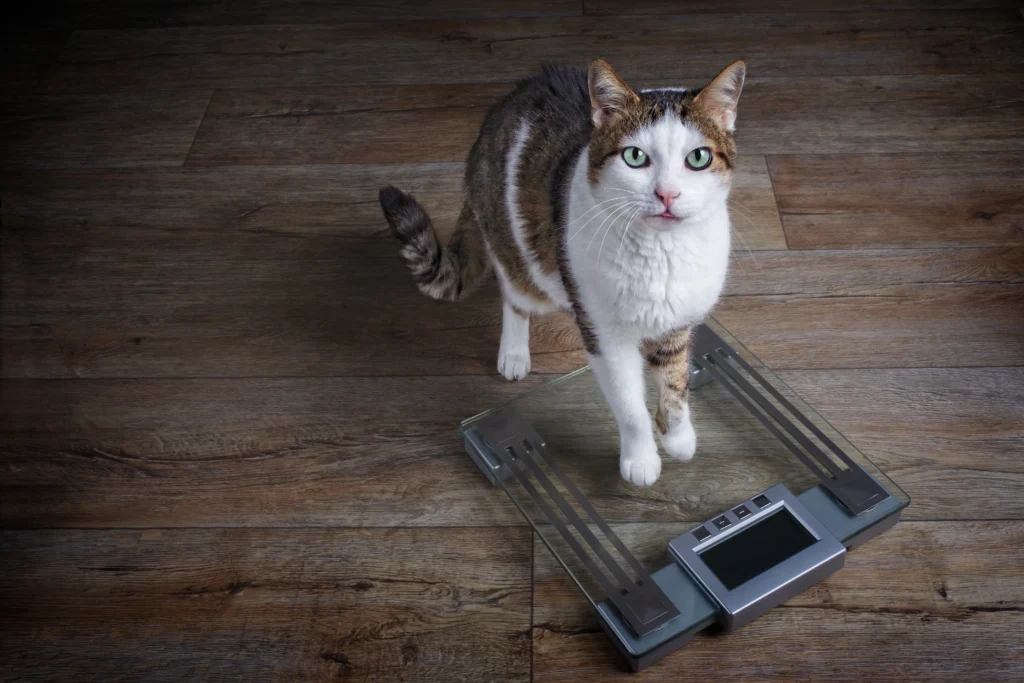
Breed-Specific Growth Patterns
Different breeds follow distinct growth trajectories that should be reflected in any comprehensive cat weight chart by breed.
Maine Coon Cat Weight Chart
The Maine Coon cat weight chart shows a much longer growth period than standard domestic cats:
| Age | Expected Weight Range |
|---|---|
| 6 months | 6-8 pounds (2.7-3.6 kg) |
| 1 year | 10-15 pounds (4.5-6.8 kg) |
| 2 years | 12-20 pounds (5.4-9.1 kg) |
| 3-4 years | 15-25 pounds (6.8-11.3 kg) |
Maine Coons don’t reach their full size until 3-4 years of age, making their cat growth chart notably different from other breeds. What might seem overweight on a standard cat weight chart could be perfectly normal for this giant breed.
Comparing Other Popular Breeds
Below is a comparative cat weight chart by breed showing the variation in adult weight ranges:
| Breed | Female Weight Range | Male Weight Range |
|---|---|---|
| Siamese | 5-8 pounds (2.3-3.6 kg) | 8-12 pounds (3.6-5.4 kg) |
| Persian | 7-12 pounds (3.2-5.4 kg) | 9-14 pounds (4.1-6.4 kg) |
| Bengal | 8-10 pounds (3.6-4.5 kg) | 10-15 pounds (4.5-6.8 kg) |
| Ragdoll | 10-15 pounds (4.5-6.8 kg) | 15-20 pounds (6.8-9.1 kg) |
| Sphynx | 6-8 pounds (2.7-3.6 kg) | 8-10 pounds (3.6-4.5 kg) |
These variations highlight why breed-specific cat weight charts are important for accurate health assessment.
Weighing Your Cat at Home: Practical Tips
Regular weighing is essential for maintaining your cat’s health according to an appropriate cat weight chart. Here’s how to get accurate measurements at home:
- Choose the Right Scale: A digital kitchen scale works well for kittens, while a bathroom scale can work for adults
- Consistent Timing: Weigh at the same time of day, preferably before meals
- The Hold-and-Subtract Method: For adult cats, weigh yourself holding the cat, then weigh just yourself and subtract
- Create a Comfortable Space: Make the weighing area quiet and stress-free
- Reward Afterward: Offer treats or play to create positive associations
Record weights weekly for kittens and monthly for adults, comparing to an appropriate cat weight chart by age to track development.
When to Consult Your Veterinarian
While a cat weight chart is a valuable tool for home monitoring, certain situations warrant professional attention:
- Weight loss of more than 10% without intentional dieting
- Failure to gain weight despite increased feeding
- Sudden weight gain not explained by increased food intake
- Kittens not following the expected curve on a kitten weight chart
- Seniors losing weight despite normal appetite
- Any dramatic changes in appetite or water consumption
These could indicate underlying health issues that require veterinary diagnosis and treatment beyond what a cat weight guide can address.
Conclusion: The Value of Regular Weight Monitoring
Understanding and utilizing an appropriate cat weight chart is one of the most valuable tools for ensuring your feline friend’s long-term health and wellbeing. By monitoring weight regularly and comparing it to breed and age-appropriate standards, you can:
- Detect health problems early when they’re most treatable
- Prevent obesity and its costly associated conditions
- Ensure proper growth and development in kittens
- Adapt care appropriately as your cat ages
- Make informed feeding decisions
Whether you’re using a kitten growth chart by week for a new addition to your family or monitoring an adult against a healthy cat weight chart, this simple practice can add years to your cat’s life and save thousands in veterinary costs.
Take the time to weigh your cat regularly, understand what constitutes a healthy weight for their specific situation, and partner with your veterinarian to address any concerns. Your cat’s weight is more than just a number—it’s a window into their overall health and a predictor of their future wellbeing.
Resources for Further Reading
For more information about cat weight and health, consider these trusted resources:
- Cornell University College of Veterinary Medicine – Feline Obesity
- American Association of Feline Practitioners Weight Management Guidelines
- Journal of Feline Medicine and Surgery: Clinical Guidelines for Weight Management
- Tufts University Cummings Veterinary Medical Center – Pet Obesity Resources
- Indoor Pet Initiative – Helping Your Cat Maintain a Healthy Weight
For more helpful articles about cat care and health, visit our other guides at PetsPump:
- Understanding Cat Nutrition: A Complete Guide
- How to Identify Common Cat Health Problems
- The Best Toys for Active Indoor Cats
- Grooming Tips for Long-Haired Cat Breeds
Disclaimer: This article is for informational purposes only and is not intended to replace professional veterinary advice. Always consult with a licensed veterinarian regarding your cat’s specific health needs and before beginning any weight management program.




